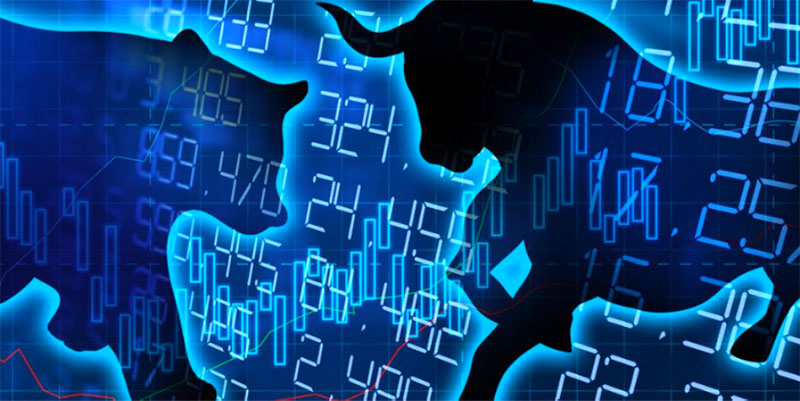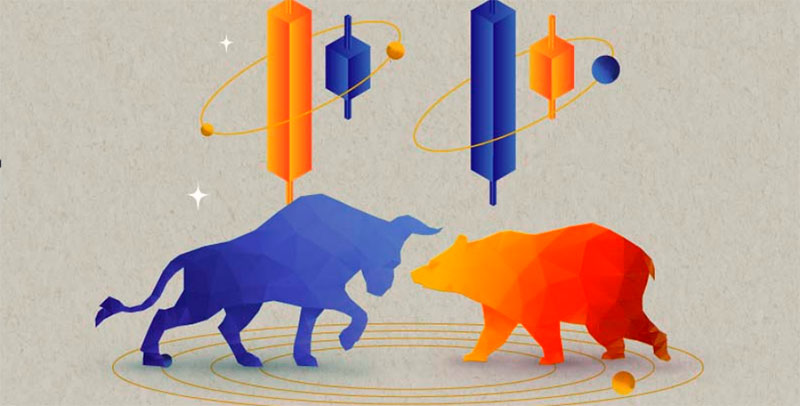Investors who are bullish vs. bearish: What distinguishes them?
Nov 17, 2023 By Triston Martin
Bulls and bears, two of the most recognizable symbols in the financial markets, share similarities in size, strength, and territoriality. Nonetheless, a bull market is defined as a 20% or more significant increase in stock market value from its recent low. In comparison, a bear market is defined as a 20% or more substantial decline in stock market value from its recent high.
Bullish and bearish both have ancient origins.
Although etymologists can't agree on which of these two nouns emerged first, "bear" is generally accepted as the original.
Merriam-Webster believes the phrase originates from the adage that it's foolish "to sell the bear's skin before one has caught the bearShort selling, or "selling the bearskin," is the practice of selling borrowed stock with the expectation of repurchasing and returning it at a reduced price; the term dates back to the 18th century.
Capitalists And Market Analysts
The word "bearskin jobbers," initially referring to those who profited from short-selling stocks, was subsequently abbreviated to "bears." The history of the term "bull" is less clear, although it seems to have come into usage because market participants and pundits want an alternative animal metaphor to "bear."
How investors react during bull and bear markets
Most investors need help to accurately identify when a bull market will turn into a bear market. To sum up, trying to time the market is never a good idea.
Loss aversion bias, in which losses are magnified relative to profits, is widespread among individual investors and is often triggered by news of a bad market. In general, though, the market does quite well in the long run.
Affluent individuals
Historically, bull market expansions have been longer and more consistent than bear market recessions. Knowing that bear markets are temporary, institutional investors like banks, businesses, and wealth management firms focus less on the here and now and more on the long run. Most financial experts agree that you should endure market ups and downs by keeping your investments unchanged.
Or, you may view it as this: When compared to days of loss, the S&P 500 index has recently seen more days of growth. The 131.4-month bull market and economic boom from March 2009 to early 2020 was the longest in U.S. history, with gains of almost 400%.
Increasing Interest Rates And Inflation
However, bear market periods of decline are typical reactions to economic and geopolitical factors like war, oil crises, worldwide pandemics, market speculation, inflation, and rising interest rates. The longest bear market lasted over 32 months and began with the 1929 stock market crash.
What factors distinguish the two when comparing a bear market to a recession?

Recessions can co-occur as preceding or following a lousy market. Therefore, the two are typically lumped together. The 1929 stock market crash and the subprime mortgage crisis were two of the worst economic downturns in American history, and they both occurred during bear markets. However, bear markets and economic downturns sometimes go hand in hand.
Dropping Prices
This is known as a bear market when stock markets, such as the S&P 500, experience a prolonged period of declining prices. In contrast, when national economic production falls, this is known as a recession. A country's GDP (or economic output) is the market worth of all final goods and services produced within its borders. In financial terms, a recession is defined as two or more consecutive quarters of slow growth and contraction—the National Bureau of Economic Research monitors and reports on the expansion and contraction of the American economy.
Employment and output both tend to be healthy when investors are upbeat. Company layoffs during gloomier bearish periods might affect both unemployment rates and the chances of a recession. The recent downturn in the United States, which lasted from February 2020 to April 2020, can be partially attributed to the spread of the coronavirus.
Define the term "recession."
Since 2020, market and U.S. economic conditions have been characterized by volatility in stock prices. The index recovered and gained ground, falling back into bear market territory in June 2022. And what does that imply, exactly?
Financial markets, like gravity, always correct themselves. In a nutshell: unchecked growth is not sustainable in the long run. Instead, markets go through cycles of expansion and contraction. A wide variety of jargon is used to describe a falling stock market. The term "dip" refers to a temporary decrease in price following an upward trend. A stock market correction is a decline of at least 10% but less than 20%. A market collapse occurs when prices drop precipitously and quickly.

Triston Martin Dec 24, 2023
Everything About SEC Form 10-Q: Filing, Deadlines, and Key Components
23750

Triston Martin Jan 22, 2024
5 Essential Facts About the Cred.ai Credit Card: A Comprehensive Guide
89146

Triston Martin May 10, 2024
Vanguard or Charles Schwab: which one is better?
51265

Triston Martin Feb 05, 2024
Financial Milestones by Age 40: What Should You Save?
20314

Triston Martin Nov 16, 2023
Clearing Up Your ChexSystems Report
55640

Triston Martin Feb 06, 2024
Choosing Between Personal and 401(k) Loans: Insights for Financial Planning
110

Susan Kelly Feb 01, 2024
A Beginner's Guide to Corporate Bonds: Definitions and Purchase Tips
91026

Susan Kelly Jan 29, 2024
Understanding Plumbing Insurance: A Comprehensive Guide
41120
